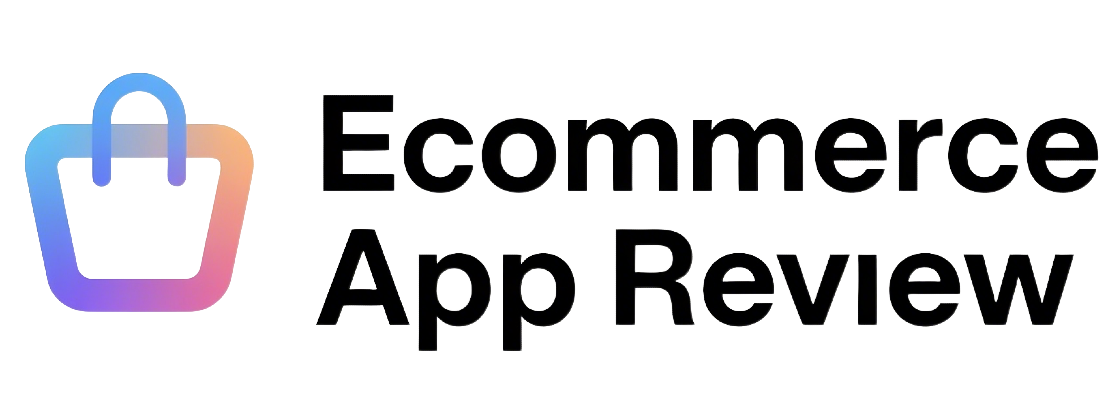Sarah. Fashion boutique owner. Portland. Smart woman who’d been running her store on some garbage custom platform since 2018. Thing is, this platform was bleeding her dry – crashes during every sale, mobile experience that made customers run screaming, and a backend that looked like it was designed by someone who hated small businesses.
She called me on a Tuesday morning, voice shaking. “I need to switch platforms. This thing is killing my business. But I’m terrified I’m going to lose everything.”
Six months later, Sarah’s on Shopify, sales up forty percent, and she sleeps through the night without worrying about her website exploding. But that migration? Cost her fifteen grand and took four months of careful planning.
Thing is, Sarah’s story isn’t unique. After eighteen years of helping businesses switch ecommerce platforms, I’ve watched migrations that saved companies and migrations that nearly destroyed them. The difference? Knowing when to migrate, how to do it right, and what it’s actually going to cost you.
I’ve guided maybe sixty platform migrations over the years. Some smooth, some disasters I’m still having nightmares about. But me and my clients learned lessons from every single one. Hard lessons. Expensive lessons. Lessons that might save your business from making the same mistakes.
Here’s what nobody tells you about switching ecommerce platforms: it’s not about the technology. It’s about survival. Your business survival, your sanity survival, and your bank account survival.
When considering switching platforms, understanding the true costs involved becomes crucial for making an informed decision.
When Platform Switching Makes Sense (And When It Doesn’t)
First thing – and this is crucial – most businesses switch platforms for the wrong reasons. They see some shiny new feature, get seduced by marketing promises, or panic over a bad week. Switching platforms to solve problems that aren’t platform problems? Recipe for disaster.
Before diving into migration, it’s worth assessing whether your current platform truly fits your business needs. Many businesses discover their real issues stem from poor configuration rather than platform limitations.
Real reasons to migrate:
Your Platform is Actually Broken
Not “slow during traffic spikes” broken. Actually broken. Crashing regularly, losing orders, charging customers multiple times, security vulnerabilities that make your site a hacker’s playground.
Had a client in Denver – bike shop – whose platform was literally losing orders. Customers would complete checkout, get charged, but orders disappeared into the digital void. Three months of that nonsense before we figured out what was happening. By then, they’d lost maybe twenty grand in revenue and their reputation was shot.
Thing is, truly broken platforms are rare. Most problems that feel like platform problems are actually hosting problems, app problems, or configuration problems. Before you burn everything down, make sure you’re solving the right problem.
You’ve Outgrown Your Platform’s Capabilities
Revenue limits forcing expensive upgrades. Feature gaps that prevent growth. Integration limitations that require ridiculous workarounds. When your platform becomes the bottleneck instead of the enabler, migration makes sense.
Jennifer – fashion brand in Austin – hit BigCommerce’s revenue limit during holiday season. Forced upgrade to Pro plan doubled her monthly costs overnight. After doing the math on two years of higher fees versus migration costs, Shopify Plus made financial sense.
But “outgrowing” doesn’t mean wanting more features. It means needing capabilities your current platform can’t provide at reasonable cost.
Total Cost of Ownership is Insane
Sometimes platforms nickle and dime you to death. App subscriptions adding up to more than rent. Transaction fees eating fifteen percent of margin. Development costs for basic customizations that should be standard features.
Tom’s auto parts business was spending eight hundred monthly on WooCommerce – hosting, security, maintenance, plugins. Migration to Shopify cut his monthly platform costs in half while improving performance. Sometimes switching actually saves money.
Terrible Reasons to Switch Platforms
Wanting “better design options.” Saw a competitor’s website and wanted something similar. Read a blog post about Platform X being “the future.” Got pitched by some vendor promising the moon.
These aren’t platform problems. They’re business problems that new platforms won’t solve.
Worst migration I ever witnessed? Client spent twelve grand switching from Shopify to WooCommerce because they read an article about “owning your data.” Six months later, they switched back to Shopify because WooCommerce was too complex. Twenty-five grand total for a round trip to nowhere.
Platform switching because you’re bored, frustrated with other business issues, or chasing the next shiny thing? Don’t. Fix your real problems first.

The Migration Cost Reality Check
Platform migration costs way more than anyone budgets for. Way more. Vendors love quoting “data migration” costs – moving products, customers, orders. That’s maybe twenty percent of real migration expenses.
According to IBM’s research on digital transformation projects, 70% of projects exceed their initial budget, with ecommerce migrations particularly prone to cost overruns.
Here’s what switching platforms actually costs:
Direct Migration Costs
- Data migration services: $1,500-$5,000 depending on complexity
- Theme setup and customization: $2,000-$8,000 for professional look
- App selection and configuration: $500-$2,500 for essential functionality
- Payment gateway setup: $200-$800 including testing
- Domain and SSL configuration: $100-$500 for proper setup
- Testing and quality assurance: $1,000-$3,000 for thorough validation
Hidden Migration Costs
- Lost sales during transition: 1-3 weeks of reduced revenue
- SEO ranking recovery: 3-6 months of potential traffic loss
- Team retraining: Learning new admin, new processes
- Customer confusion: Support overhead from interface changes
- Marketing material updates: New checkout flows, updated screenshots
- Integration rebuilds: Custom connections to other systems
Business Disruption Costs
- Inventory synchronization issues: Overselling or underselling during transition
- Customer service chaos: Questions about new checkout process
- Marketing campaign delays: Can’t launch new features during migration
- Cash flow impact: Migration costs plus potential revenue dips
According to Gartner’s research on digital commerce migrations, businesses typically experience 10-25% revenue disruption during platform transitions, making timing and preparation critical for success.
Real example: David’s outdoor gear migration from BigCommerce to Shopify. Budgeted five grand, actually spent fourteen. Why? Custom product configurator rebuild ($3,500), advanced shipping setup ($1,200), mobile optimization ($2,800), and three weeks of lost sales during holiday season ($7,000 revenue impact).
Thing is, David’s migration was successful. Worth every penny for his business. But budgeting five grand for a fourteen-grand project almost killed the whole thing.
Platform Migration Planning Framework
After dozens of migrations, me and successful clients follow the same basic framework. Skip steps at your own risk.
Understanding which platform best suits different business types becomes essential during the planning phase, as this determines both migration complexity and long-term success.
Phase 1: Migration Justification (Weeks 1-2)
Document current platform costs. Everything. Monthly fees, app subscriptions, development expenses, support costs, your time managing it. Most businesses discover their “cheap” platform costs way more than expected.
Define migration success criteria. What specific problems will the new platform solve? How will you measure success? Revenue targets, cost savings, feature requirements. Write this down. Seriously.
Calculate migration ROI. Compare two-year total cost of staying versus switching. Include opportunity costs – features you can’t add, integrations you can’t build, growth you can’t achieve.
Get stakeholder buy-in. Everyone affected by the change needs to understand why it’s happening, what it’ll cost, and what they’ll gain. Marketing, operations, customer service – all need to be aligned.
Sarah’s boutique justification was clear: current platform crashes were costing $2,000 monthly in lost sales, mobile conversion was 30% below industry average, and development costs for basic features were insane. Migration would pay for itself in eight months.
Phase 2: Platform Selection and Vendor Evaluation (Weeks 3-4)
Test with real data. Don’t choose platforms based on marketing demos. Import sample products, set up actual checkout flows, test with real payment methods.
Evaluate total ecosystem costs. Platform fees plus required apps plus development expenses. Factor in transaction fees, overage charges, forced upgrades.
Technical due diligence. Can the platform handle your product catalog complexity? Integration requirements? Performance needs? Don’t assume – verify.
Migration complexity assessment. How hard will it be to move your data, recreate your workflows, rebuild your customizations?
Phase 3: Migration Strategy and Timeline (Weeks 5-8)
Content audit and cleanup. Which products, categories, pages actually need migration? Clean up duplicates, outdated content, broken links before moving anything.
URL mapping strategy. Every current URL needs to redirect properly to new platform equivalents. SEO nightmare if you mess this up.
App and integration planning. Which current functionality needs recreation? What apps will you need? How will third-party systems connect?
Launch timing. Avoid busy seasons, major sales, new product launches. Plan for worst-case scenarios – delays always happen.
Jennifer’s fashion brand migration timeline: 2 weeks platform testing, 2 weeks vendor negotiations, 4 weeks development, 2 weeks testing, 1 week soft launch, 1 week full cutover. Twelve weeks total, launched in February to avoid holiday chaos.
Phase 4: Technical Implementation (Weeks 9-14)
Development environment setup. Build and test everything on staging before touching production. Obvious but somehow people skip this.
Data migration in phases. Products first, then customers, then orders. Test each phase thoroughly before moving to the next.
Payment gateway configuration. Test every payment method with real transactions. Payment issues kill conversions immediately.
Third-party integrations. Email, analytics, inventory, customer service – everything needs to connect properly.
Thing is, implementation always takes longer than planned. Budget 50% extra time for “unexpected complications.” They’re not unexpected – they’re inevitable.
Phase 5: Testing and Quality Assurance (Weeks 15-16)
Comprehensive functionality testing. Every product, every checkout flow, every customer journey. If it’s broken on launch day, customers will find it first.
Performance testing. Load times, mobile responsiveness, server capacity. New platforms often perform differently than expected.
SEO validation. Meta tags, structured data, XML sitemaps, robots.txt. Technical SEO mistakes can tank rankings for months.
Payment processing verification. Process test orders through every payment method. Refund test orders. Verify tax calculations.
Michael’s supplement store discovered their tax calculations were wrong two days before launch. Rush fix cost an extra two grand and delayed launch by a week. Testing saves disasters.
Phase 6: Launch and Post-Migration (Weeks 17-20)
Soft launch period. Limited traffic, close monitoring, quick issue resolution. Don’t announce the new platform until everything’s stable.
Traffic gradual transition. Don’t flip the switch all at once. Route percentage of traffic to new platform, monitor performance, increase gradually.
Performance monitoring. Conversion rates, average order value, site speed, error rates. New platforms always have different performance characteristics.
SEO tracking. Monitor rankings, organic traffic, crawl errors. Address issues immediately before they compound.
Customer feedback collection. How’s the new checkout experience? Any confusion or problems? Fix issues while they’re small.
almost out of coffee, this is getting long
Migration Disaster Prevention
Eighteen years of watching migrations go wrong taught me exactly how they fail. Same patterns, same mistakes, same preventable disasters.
The Data Migration Nightmare
Most common disaster: assuming data migration tools work perfectly. They don’t. Ever.
Product variants get scrambled. Customer passwords need resets. Order history disappears. SEO-friendly URLs become garbage. Custom fields vanish into digital purgatory.
Prevention: Manual verification of migrated data before launch. Spot-check products, test customer accounts, verify order histories. Boring work that prevents expensive disasters.
The SEO Ranking Collapse
Second most common disaster: tanked organic traffic after migration. Broken redirects, missing meta tags, changed URL structures that confuse search engines.
Research from Moz shows that improper redirects during site migrations can result in 15-30% permanent organic traffic loss, making this one of the most expensive migration mistakes.
Lost a client maybe five years ago because their developer “forgot” to set up redirects. Six months to recover rankings, forty percent traffic loss during recovery. Brutal.
Prevention: Comprehensive URL mapping, proper 301 redirects, technical SEO audit before and after migration. Never assume anything about SEO – verify everything.
The Payment Processing Failure
Nothing kills a business faster than broken payments. Customers can’t complete orders, transactions fail mysteriously, refunds don’t process.
Prevention: Test every payment method with real money. Process actual orders, issue real refunds, verify everything works before directing traffic to new platform.
The Integration Breakdown
Email marketing stops working. Analytics tracking breaks. Inventory doesn’t sync. Customer service tools lose connection. Integration failures cascade quickly.
Prevention: Test every integration thoroughly in staging environment. Have backup plans for critical integrations. Monitor everything closely during first weeks post-launch.
When to Stick with Your Current Platform
Sometimes the best migration is no migration at all.
Platform Problems That Aren’t Platform Problems
Slow website? Usually hosting or optimization issues, not platform limitations. Poor conversions? Often design or user experience problems. High costs? Sometimes app bloat rather than platform expense.
Had a client convinced they needed to switch from Shopify because their site was “slow.” Turned out they had eighty-seven apps installed. Cleaned up the app mess, site speed improved dramatically. Saved them a fifteen-grand migration.
The Grass-is-Greener Trap
Every platform has limitations. Switching doesn’t solve business problems that aren’t platform-specific. Poor product descriptions, weak marketing, bad customer experience and service – new platforms won’t fix these.
Timing Considerations
Don’t migrate during busy seasons, major product launches, or business uncertainty. Platform switching requires focus and resources. Trying to migrate while managing other major changes? Recipe for disaster.
Investment vs. Replacement Logic
Sometimes improving your current platform costs less than switching. Performance optimization, better hosting, strategic app additions, custom development for specific needs.
Calculate improvement costs versus migration costs honestly. Include disruption, learning curves, risk factors. Often upgrading makes more financial sense than replacing.
Post-Migration Success Strategies
Migration success isn’t just technical – it’s business optimization. New platform gives you opportunities to improve everything.
For businesses switching to Shopify specifically, understanding the platform’s growth trajectory and recent improvements can help maximize the migration investment.
Performance Optimization
New platforms often perform differently. Optimize images, configure caching, implement CDNs, monitor page speeds. Don’t assume new platform automatically means better performance.
Conversion Rate Optimization
New checkout flows, different user experience, updated mobile design. Test everything. A/B test checkout processes, product pages, navigation structures. New platforms enable optimization opportunities.
SEO Recovery and Growth
Migration often provides opportunity to improve technical SEO. Better URL structures, enhanced meta tags, improved site architecture. Don’t just recreate old structure – optimize it.
Analytics and Tracking Improvements
Fresh start on analytics setup. Implement proper tracking, set up conversion goals, configure attribution models. Use migration as opportunity to upgrade your data capabilities.
Team Training and Process Updates
New platform requires new processes. Document everything, train team members, establish new workflows. Don’t wing it – systematize the new platform usage.
The Bottom Line on Platform Migration
Platform migration is business surgery. Expensive, disruptive, risky. But sometimes necessary for growth, cost control, or basic functionality.
Success requires honest assessment of current problems, realistic budgeting for total costs, methodical planning and execution, and acceptance that things will go wrong.
Thing is, done right, platform migration can transform your business. Better performance, lower costs, enhanced capabilities, improved customer experience. Sarah’s boutique sales increased forty percent in the six months after migration. Jennifer’s fashion brand cut platform costs in half while adding crucial features.
But done wrong? Disasters I’m still having nightmares about.
Before you start shopping for new platforms, ask yourself: Is this really a platform problem? Have I optimized my current platform? Can I afford the real costs of migration? Do I have the time and resources to do this properly?
If the answers are yes, yes, yes, and yes – then let’s talk about which platform actually fits your business.
[Take our platform assessment to see if migration makes sense for your business – based on 60+ successful migrations]
For businesses ready to make the switch, comprehensive platform selection guidance can help identify the best destination platform based on specific business requirements rather than generic feature lists.
Look, platform migration isn’t something you do because you’re bored or frustrated with other business problems. You do it because your current platform genuinely limits your growth, costs too much, or fails to meet basic requirements.
Do it right, and migration transforms your business. Do it wrong, and you’ll spend the next year fixing problems you created. Choose wisely.

